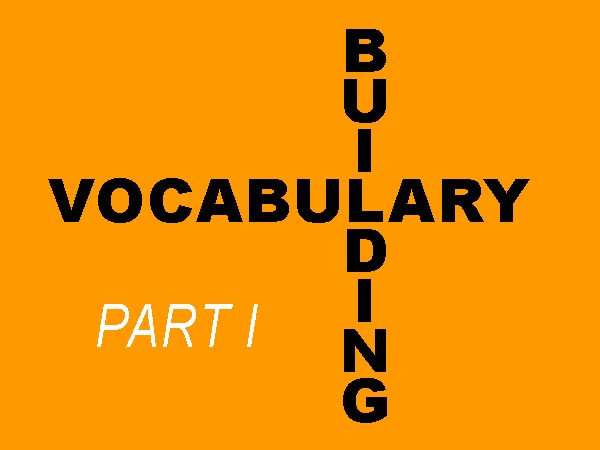Note: One good way to learn vocabulary is to find the meaning yourself--without a dictionary--by taking clues from the context. Learn four different ways to do this!
Get Ready: What are some ways you can figure out the meaning of a word from its context, without using a dictionary?
In Lessons #01-193, #01-194, and #01-195, we discussed "Reading the Newspaper" using the SQ3R system, meaning "Survey, Question, Read, Recite, Review."
Today I want to say more about building vocabulary by using context.
--------
As I said in Lesson #01-195, "The difference between reading and studying is a pencil." To get the most out of reading a newspaper, you'll need to read with a pencil (or pen) in hand.
The first step is to read an article all the way through, as quickly as you can, underlining or highlighting any words that you don't understand.
Now go back and re-examine the words that gave you trouble.
One well-known method for understanding new words is to examine the context, that is, the situation in which the word is found.
Look at this sentence: "We knew that he was barmy because he kept talking to himself and writing words in the air." "Barmy," you might guess, is another word for "crazy."
In this sentence, the person's behavior helps you understand the word. Thus, you are reading an "Example" of the behavior of a barmy person. Examples are one of four kinds of contextual clues.
Others can be in the form of synonyms, elaboration, and explanations.
Synonym: On the front page of the Shenzhen Daily for Thursday, December 18, a headline reads, "Fed slashes key rate to near zero." Now, perhaps you're not sure what "slashes" means. But the first sentence of the article reads in part: "The U.S. Federal Reserve cut a key rate Tuesday..." So this synonym tells you that "slash" here means "cut."
Elaboration: Perhaps you're still confused about how "slash" or "cut" are used here. Read the full first sentence (the "lead") and you'll see: "The U.S. Federal Reserve cut a key rate Tuesday to a range of between zero and 0.25 percent--a cut of at least 0.75 percentage points." Here the "cut" has been elaborated upon. More information has been given.
Explanation: If you're still not sure, the rest of the article discusses the matter further, giving an explanation of the action and its cause. By the time you finish, you should have no doubt about the meaning of "slash."
Now, if all else fails, use a dictionary. But I strongly recommend that, if your English is good enough to read "Buzzwords," you should use an English-English dictionary, not a bilingual one.
Why? First, because it will broaden your English ability, introducing even more words. Second, because it keeps your thoughts "in English," instead of switching back to your own language. And finally, because sometimes, bilingual dictionaries are just wrong!
In Lesson #01-200, we'll apply these four techniques to words from a real newspaper article.
--------Read more: https://en.wikipedia.org/wiki/Vocabulary_learning
Practice: Match the term to its definition below:
- bilingual
- broaden
- confused
- contextual
- elaborated (on)
- highlighting
- percent
- re-examine
- switching
- synonym
- a word that means the same thing, like "human" and "person"
- using two languages
- using a colored marker, usually one whose marks you can see through
- the number out of one hundred; written like this: %
- make wider; increase or improve
- having to do with where a word is situated
- expanded; amplified
- uncertain; puzzled
- changing; moving
- look at again
Answers are in the first comment below.
Submitted to the Shenzhen Daily for December 22, 2008



Answers to the Practice: 1. b; 2. e; 3. h; 4. f; 5. g; 6. c; 7. d; 8. j; 9. i; 10. a
ReplyDelete